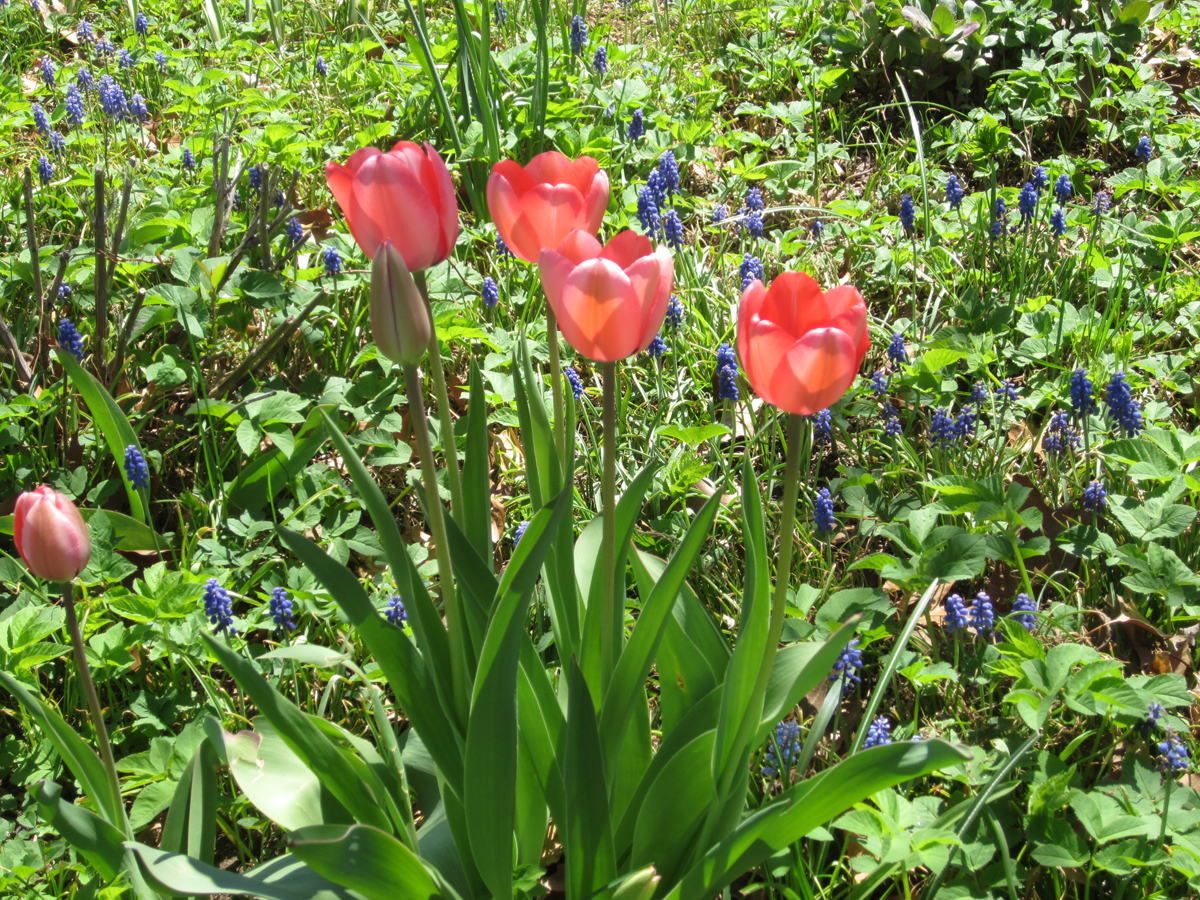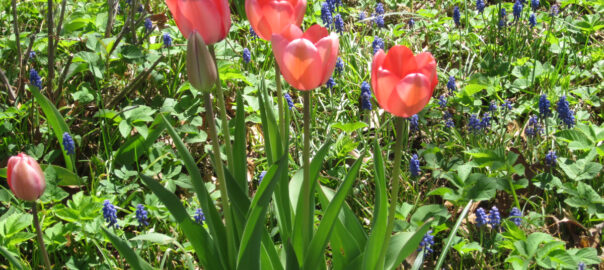
Even though there’s pollen everywhere, when we venture outside it’s exciting to see what’s going on in the garden as the month of May makes its arrival.
Sadly, most of our daffodil blossoms have gone by, but they really put on quite a show this year! Especially lovely has been the enjoyment of our neighbor Susan’s daffodils, which she planted in a new garden area she designed herself, easily visible from our back porch.
As we walk around our garden we are greeted by blooming forsythias, azaleas, rhododendrons, creeping phlox (Phlox subulata), bleeding hearts (Dicentra spectabilis), bloodroot (Sanguinaria canadensis), and wood lilies (Trillium grandiflorum), to name a few.
Although not in bloom yet, the sweet irises (Iris pallida ‘Variegata’) are “putting on their own show” via their leaves. They are often referred to as variegated iris or zebra iris plants because of their dramatic vertical stripes of gold, cream, white, and bluish-green foliage.
The colorful blue grape hyacinths (Muscari armeniacum) are very pretty, and it’s amazing how they have multiplied over the years. Not affected by any pests or diseases, they do have a tendency to spread, and many people consider them invasive.
They not only spread via underground bulb offsets but by seeds as well. I’ve been encouraged to deadhead their dying blooms to stop seeds from developing, and to keep an eye on established clumps, occasionally digging them up and disposing of them (but not into a compost pile).
Weeds such as the common blue violets (Viola sororia) and creeping charlie (Glechoma hederacea) can be seen all over our so-called lawn. But the real scary one is the garlic mustard (Alliaria petiolata).
According to the Nature Conservancy, this biennial (pretty white flowers and all) is a threat to the biodiversity of native ecosystems and “spreads its seeds in the wind and gains a foothold in fields and forests by emerging earlier in spring than many native plants. By the time native species are ready to grow, garlic mustard has blocked their sunlight and out-competed them for moisture and vital nutrients.”
Some of our trees are also starting to bloom, such as the dogwood, cherry, pear and apple ones.
Especially pretty at this time of the year are the pink perennial tulips – those that survived the squirrels digging and eating their bulbs. Although many of my friends have given up growing tulips, and some even refer to them as “annuals,” there certainly are some that have come back and bloomed year after year (if not eaten by the rascals).
Sadly, I don’t remember the variety or their name. It’s time to do some researching!

